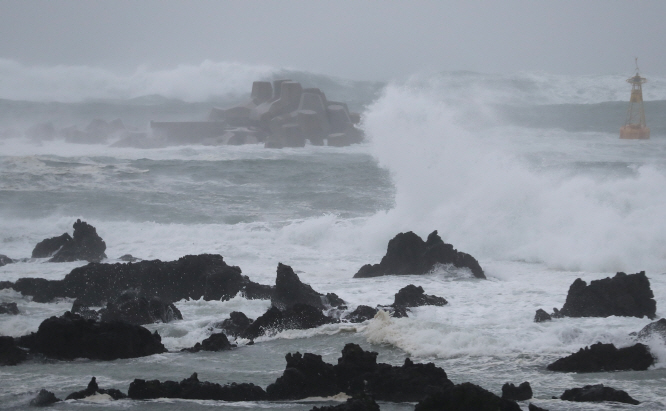BOSTON, Jan. 19 (Korea Bizwire) — Catastrophe modeling firm AIR Worldwide (AIR), in collaboration with experts from the Brookings Institution and AXIS Capital Holdings Limited, released a report which explores how climate change may affect hurricane risk in the United States by 2050, specifically related to financial losses to residential and commercial properties. AIR Worldwide is a Verisk (Nasdaq:VRSK) business.
“Climate-related risks are among the most serious issues facing the world today and insurers have a critical role to play in mitigating them. Investing in ongoing research like today’s, in partnership with AIR and Brookings scholars, is essential,” said Albert Benchimol, President & CEO at AXIS. “While climate change is likely to affect hurricanes in multiple ways, the report highlights two important aspects: an increase in the frequency of the strongest storms, and additional storm surge flooding due to sea level rise.”
The analysis relies on the AIR Hurricane Model for the United States, which considers wind, storm surge, and precipitation-induced flooding, and AIR’s database of property exposure. The model features a catalog of simulated hurricane seasons, containing multiple events of different strength making landfall along the Gulf and Atlantic coastlines. The baseline catalog is developed to reflect today’s climate and AIR created a new set of catalogs that reflect both the frequency and severity changes resulting from the future climate.
The report explores future hurricane-generated storm surge losses for selected study areas around New York, Houston, and Miami, as indicators of the additional risk created by rising sea levels. The results of the analysis show that increased event frequency and sea level rise will have a meaningful impact on future damage. The growth in the number of stronger storms, and landfalling storms overall, increases modeled losses by approximately 20%, with slightly larger changes in areas such as the Gulf and Southeast coasts where major landfalls are already more likely today. The loss increases extend to inland areas as well, as stronger storms may penetrate farther from the coast. The impacts from sea level rise, using the analysis of storm surge for New York, Miami, and Houston suggests that by 2050, sea level rise may increase storm surge losses by anywhere from one-third to a factor of almost two, with larger impacts possible when combined with increases in the number of major storms. The actual losses in 2050 could be higher; while the analysis holds property exposure constant at today’s levels, coastal exposure is currently growing at a 4% annual rate and are likely to continue growing.
“This analysis points to increased damage and losses from hurricanes without factoring in any changes to the concentration of property exposure along the coast,” said Dr. Peter Sousounis, vice president and director of climate change research, AIR Worldwide. “With more intense hurricanes making landfall, and storm surges from more strong storms on top of a higher sea level, the results presented in this study are only the first step. Additional research into a wider range of impacts is necessary to complete what is surely a more complex picture, particularly related to how risk may change geographically.”
Critical factors include whether the strongest storms become not only more frequent, but also more intense; whether storms could remain stronger at higher latitudes; how much additional rainfall hurricanes might produce, and whether storms are slowing down at landfall and maintaining their intensity longer after landfall. Accounting for the full range of impacts for coastal and inland areas is important to identify how populations will be affected and how public policy might adapt to address what is likely to be a widening insurance protection gap.
“The work follows on from related AIR research that considers the climatic effects on atmospheric perils responsible for multiple billion-dollar disasters that occur annually around the world,” concluded Bill Churney, president, AIR Worldwide. “The modeling tools and data presented in this report can be extended for additional perils, including inland flooding, wildfires, and convective and extratropical storms. While there is considerable uncertainty in how extreme event risk may evolve in a warmer climate, these models are a practical approach to assessing the potential impacts.”
Download “Quantifying the Impact from Climate Change on U.S. Hurricane Risk” here: https://airww.co/climateimpact
About AIR Worldwide
AIR Worldwide (AIR) provides risk modeling solutions that make individuals, businesses, and society more resilient to extreme events. In 1987, AIR Worldwide founded the catastrophe modeling industry and today models the risk from natural catastrophes, supply chain disruptions, terrorism, pandemics, casualty catastrophes, and cyber incidents. Insurance, reinsurance, financial, corporate, and government clients rely on AIR’s advanced science, software, and consulting services for catastrophe risk management, insurance-linked securities, longevity modeling, site-specific engineering analyses, and agricultural risk management. AIR Worldwide, a Verisk (Nasdaq:VRSK) business, is headquartered in Boston, with additional offices in North America, Europe, and Asia. For more information, please visit www.air-worldwide.com. For more information about Verisk, a leading data analytics provider serving customers in insurance, energy and specialized markets, and financial services, please visit www.verisk.com.
###
For more information, contact:
Kevin Long
AIR Worldwide
01-617-267-6645
klong@air-worldwide.com
Source: AIR Worldwide via GLOBE NEWSWIRE








